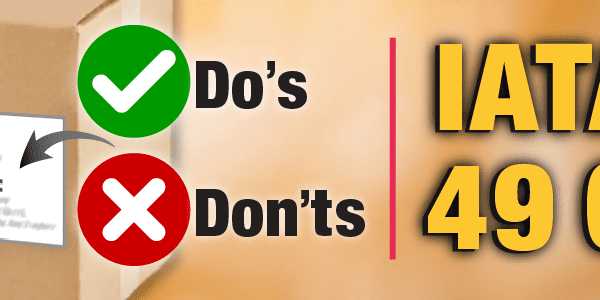
TDG Large Packaging
Still Time to Review the draft “Design, Manufacture and Use of Large Packaging for Transportation of Dangerous Goods in Classes 3, 4, 5, 6.1, 8 and 9”
Transport Canada provided notice last month of the availability of a draft Canadian General Standards Board (CGSB) standard for large packagings for specified classes of dangerous goods (DG). The contents of the draft are largely based on the UN “Recommendations on the Transport of Dangerous Goods Model Regulations” (UN TDG Model) 20th Edition.
The draft is open for comment by interested parties until June 8, 2018.
Similar, but Not Identical
Although the current draft is based on the 20th edition of the UN Model, there are some differences – for example: the Canadian TDG regulations (TDGR) have not yet updated Schedule 1 to the current UN numbers above UN3534; TDGR cite Class-specific standards for certain DG (Classes 1, 2, 6); and not all of the lithium battery packaging has been incorporated.
The CGSB-43.145 proposal does, however, contain a supplementary instruction for UN2794 and UN2795 permitting these batteries to be shipped unpackaged on shelving that is permanently fixed within a vehicle. This LP801 standard presumably replaces equivalency certificates providing the option to battery distributers and members of automotive industry associations.
The UN Model and CGSB 43.145 are similar in restricting the use of large packaging to the lesser hazardous Classes/Divisions, typically at the packing group III hazard level.
The draft CGSB standard mostly limits LP1 (liquids) and LP2 (solids) to PG III substances without a subsidiary class. The LP2 standard only permits Classes 4.1, 4.2, 5.1, 6.1, 8 and 9.
Since TDGR Schedule I doesn’t have a packaging column (unlike the UN Model), certain groups and specific UN numbers in the exception lists in the draft CGSB Annex B for selecting the appropriate LP packing instruction (PI), contain a PI LP11.
LP11 indicates LP are prohibited for those items.
The Transport Canada notice, with details on obtaining a copy of the draft and provisions for commenting, is available at:
http://www.tc.gc.ca/eng/tdg/clear-modifications-menu-261.htm
Comparison Table – Large Packaging Standards
| UN Model | Draft CGSB.43-145 | Covers |
|---|---|---|
| LP01 | LP1 | Liquids, mostly PGIII without subsidiary. |
| LP02 | LP2 | Solids, mostly PGIII without subsidiary (not 4.3, 5.2). |
| LP03 | Not yet included. | UN 3537 et al “Articles” containing DG. |
| Not used- DG list indicates absence of LP provisions | LP11 | LP not permitted for these items. |
| LP99 | Not used- covered by CGSB “Allowable Design Variations”, TDG Part 14 Equivalency Certificates, Special Cases or Special Provisions | Requires competent authority authorization for deviations. |
| LP101, LP102 | Not included, provisions in Class 1 CGSB standard | Explosives |
| LP200 | Not included, provisions in Aerosol CGSB standard. | Aerosols |
| LP621 | Not included, provisions in Class 6.2 CGSB standard | Biomedical waste |
| Not included | LP801 | Acid or alkali batteries unpackaged on vehicle shelves |
| LP902 | LP902 | UN3268 Safety Devices (airbag inflators, etc.) |
| LP903 | LP903 | Lithium battery, UN 38.3 certified, PI |
| LP904 | TDGR SP137 references UN Model LP904. | UN Model specific to single defective/damaged lithium batteries- no fibreboard |
| LP905 | Not included- TDGR SP123 and provision for TDGR Part 14 EC | Prototypes for testing against UN 38.3 |
| LP906 | Not included. | UN Model specific to single damaged/defective batteries fibreboard included but temperature resistance of final package must be verified. |





